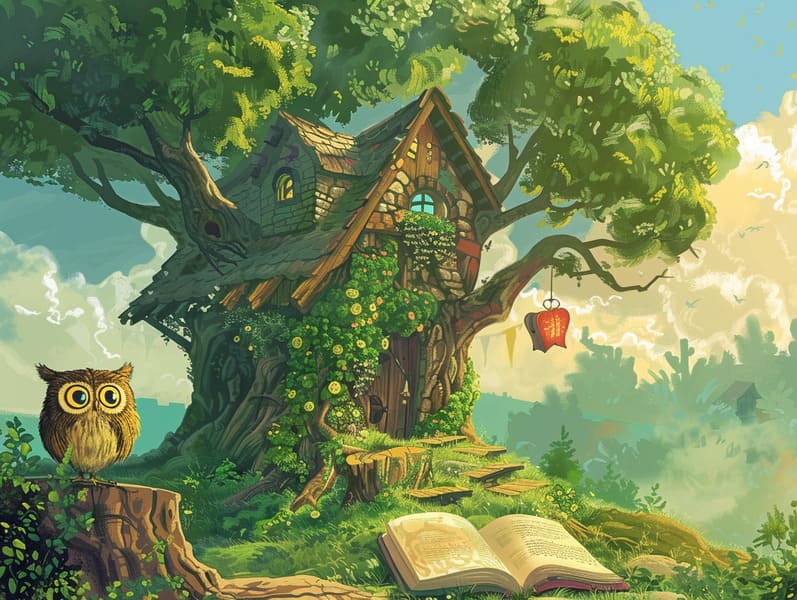The Evolution of Popular Fairy Tales with Their Unchanging Grace.
The Evolution of Popular Fairy Tales with Their Unchanging Grace.
Blog Article

Popular fairy tales have ancient roots. These narratives have been told from one generation to the next millennia before they were ever recorded. They originated from a variety of cultures, including Eastern traditions. They were initially passed along among older generations, often carrying themes and messages relevant to the societal norms and beliefs of the time.
The Brothers Grimm, Jacob and Wilhelm Grimm, were among the first to compile and publish many of these beloved stories. Their published works, "Grimm's Fairy Tales," included tales like "Cinderella," "Hansel and Grethel," and "Schneewittchen," which have since become mainstays in the world of traditional fairy tales. Similarly, Andersen's enchanting fairy tales, such as "The Little Mermaid," and "The Ugly Duckling," have enchanted hearts worldwide, solidifying their place in the pantheon of treasured fairy tales.
Despite their historical roots, classic fairy tales remain as important as ever, especially as bedtime stories for kids. These delightful tales are now available in diverse formats, including beautifully illustrated books, enchanting animations, and online fairy tales.
Their enduring popularity can be linked to several fascinating points:
Key Lessons: Classic fairy tales often whisper important moral lessons. Stories like "The Tale of the Boy Who Cried Wolf" teach the merit of being truthful, while "The Tale of the Tortoise and the Hare" exemplify the traits of persistence and meekness. These tales offer kids clear distinctions between correct and incorrect, molding their moral compass in a subtle yet lasting way.
Compassion and Knowledge: Old fairy tales frequently present figures facing problems and hurdles, provoking young listeners to resonate with their struggles and cheer for their triumphs. For instance, "The Story of Beauty and the Beast" points out the necessity of appreciating inner worth to see the inner core of a soul, strengthening insight and insight.
Cultural Knowledge: Many fairy tales are rooted in the cultural contexts from which they came. Engaging with these stories can provide intriguing perspectives into different historical contexts, advancing a sense of international awareness and knowledge.
Imagination and Creativity: The fantastical elements in timeless fairy tales—enchanted forests—spark children’s innovative ideas. These stories move readers to magical realms, firing up innovative dreams and a sense of enchantment that remains a lifetime.
Old fairy tales are not only entrancing but also enlightening. They act as charming tools in building various cognitive and affective skills in young readers. When timeless fairy tales are spoken out loud, they boost speech development by presenting new words and detailed sentence structures. This practice also advances hearing perception and attention span, as young ones track the narrative, excited to see these guys what happens next.
Furthermore, exploring the themes and characters of ancient fairy tales can foster thought processes and evaluative skills. Young ones are taught to discern patterns, foresee events, and get cause and effect. These reflections also help kids speak out their thoughts and feelings, promoting their emotional intelligence.
In today’s digital era, the abundance of digital storybooks has made these fairy tales more obtainable than ever. Web platforms and web apps supply ample collections of traditional fairy tales that can be enjoyed or listened on anytime, anywhere. Fairy tales narrated are particularly common, featuring an fascinating method for the young to engage with these captivating stories. Narrated books and voiced videos move characters and settings to life, often supported by entrancing music and harmonies that amplify the story adventure.
The unfading fascination of timeless fairy tales lies in their ability to alter to present eras while keeping their central messages. Contemporary modernizations of these fairy tales often show more different figures and modern settings, making them understandable to today’s audience. However, the basic principles of spirit, kindheartedness, and impartiality remain unchanged, continuing to reach young listeners of all ages.
Timeless fairy tales also offer a sense of contentment and familiarity. They provide a ordered narrative with a definite beginning, middle, and end, often concluding with the finalization of conflicts and the triumph of rightness over wrongness. This regularity can be relieving for kids, offering a sense of sturdiness in an constantly changing world.
Old fairy tales continue to mesmerize and instruct new generations, maintaining their radiance and importance in modern society. As kids' bedtime tales, they bequeath a perfect blend of charm and understanding, facilitating moral values, empathy, and creativity. The prevalence of online fairy tales and the in demand status of fairy tales voiced promise that these timeless tales remain obtainable to new generations.
By perpetuating and divulging these stories, we continue to honor the rich tapestry of tradition and cultural heritage. Whether you are experiencing a gorgeously illustrated book, exploring a web-based library, or playing an read-aloud book, the radiance of bedtime fairy tales is always within reach. These fairy tales remind us of the continued presence of storytelling and its ability to draw us together across time and space.
Be it you are exploring a artistically illustrated book, discovering a web-based library, or hearing an spoken story, the majesty of Grimm's fairy tales is always within reach.
These narratives show us of the enduring influence of narratives and its ability to draw us together across epochs and places, forging a link that fascinates and enlightens alike.